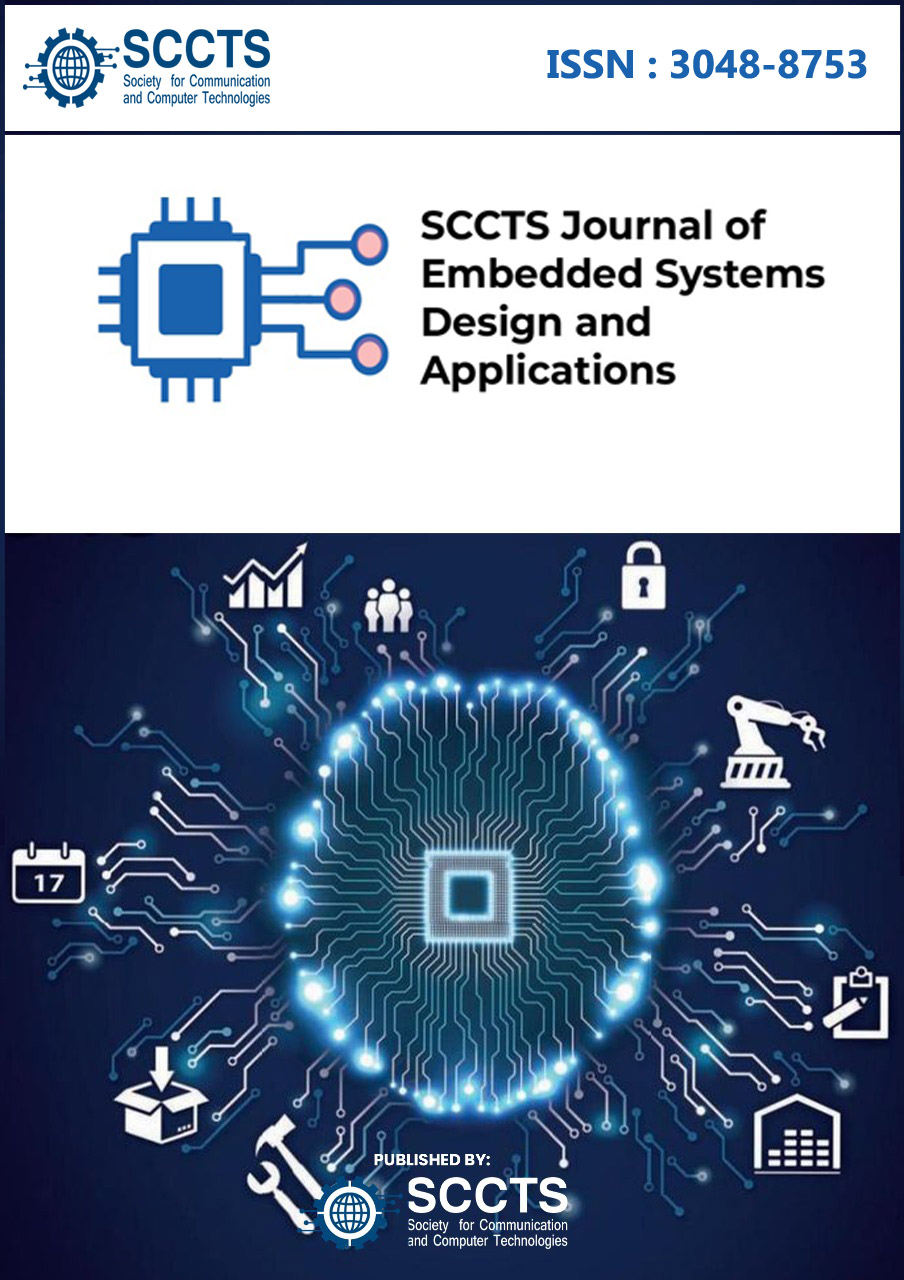Next-Generation Embedded Systems: Advanced Design Methodologies, Real-World Applications, and Emerging Technology Trends
DOI:
https://doi.org/10.31838/ESA/03.02.01Keywords:
Embedded systems design; hardware/software co-design; low-power architecture; edge AI; Internet of Things (IoT); reconfigurable computing; model-based design; secure embedded systems; AI-driven optimization; heterogeneous computing; neuromorphic computing; 5G/6G-enabled embedded platforms; real-time applications; emerging technology trendsAbstract
The evolution of embedded systems is more rapid and is bringing about a transformation across all systems of healthcare, automotive, industrial automation, and consumer electronics where intelligent, energy efficient and application specific solutions are becoming more important. The paper seeks to describe the complete analysis of next generation embedded systems especially in designing new approaches, practical implementations of the systems, and technological trends. The paper uses a structured review methodology; it would therefore pull together results of recently published peer-reviewed sources, industry reports, and case studies. Analysed methodologies are hw/sw co-design, power/energy conscious architecture, AI-driven optimisations, security-aware design and model-based development processes. The review findings also underscore the fact that a combination of edge AI accelerators, heterogeneous computing systems and secure, reconfigurable systems both maximizes performance per-watt and operational resiliency. The analysis also shows that new enablers like 5G/6G connectivity, neuromorphic computing and quantum-inspired algorithms will redefine embedded capabilities in application areas that generate particular latency and mission-critical applications. The discussion explains some of the major issues that the dialogue addresses such as security weaknesses, interoperability gaps, and sustainable design prerequisites. Every conclusion re-iterates the need to focus future research on cross-disciplinary research to come up with more scalable, secure, and eco-friendly embedded systems. The synthesis provides guidance to academic researchers, engineers and practitioners in the industry to utilize the current state of art developments in embedded systems, into the real world.





